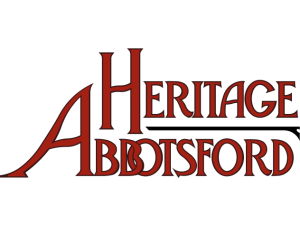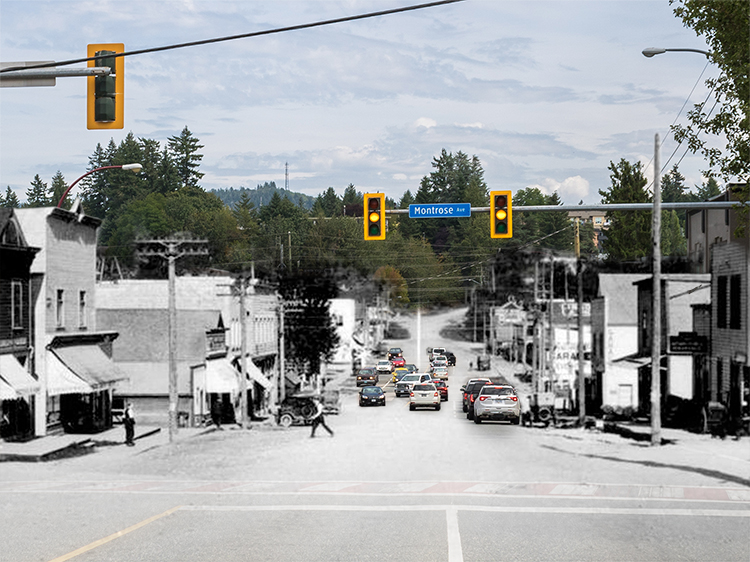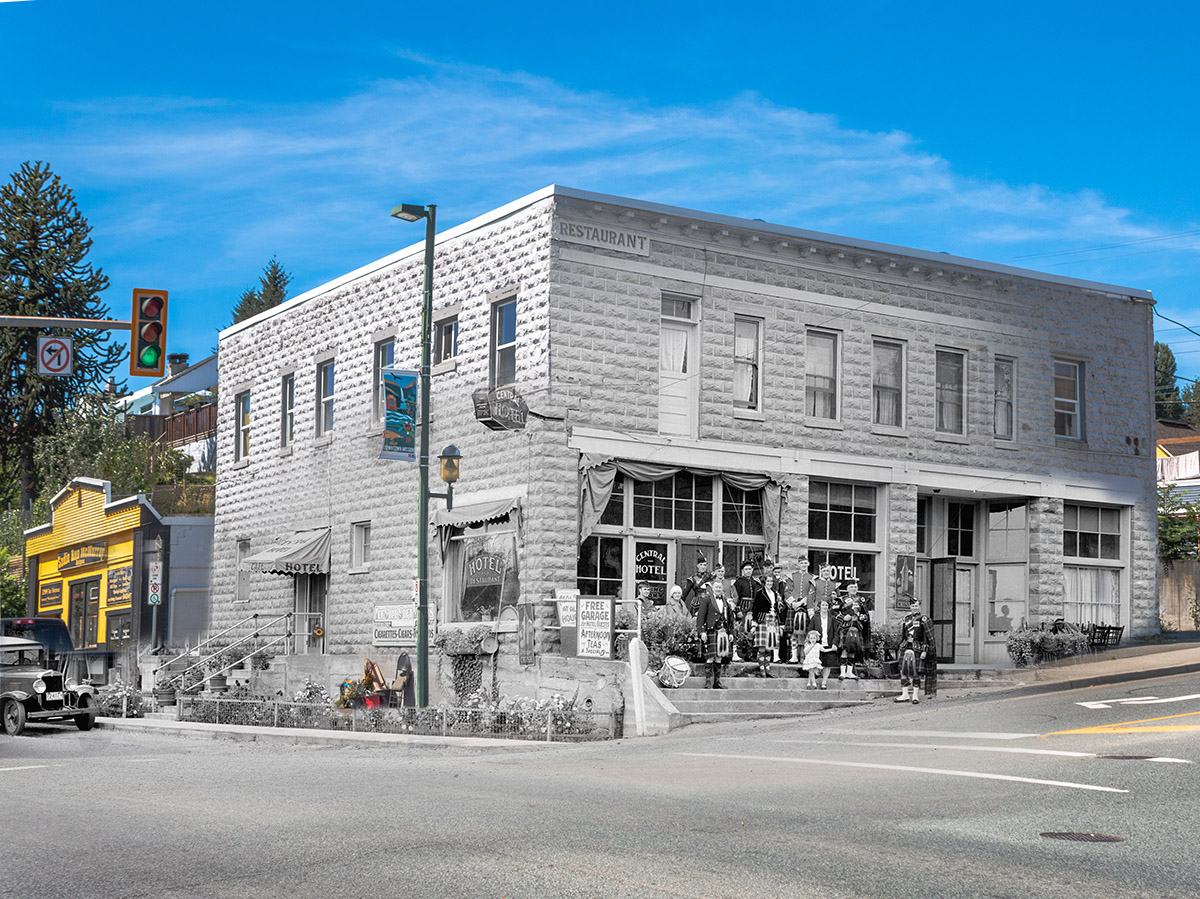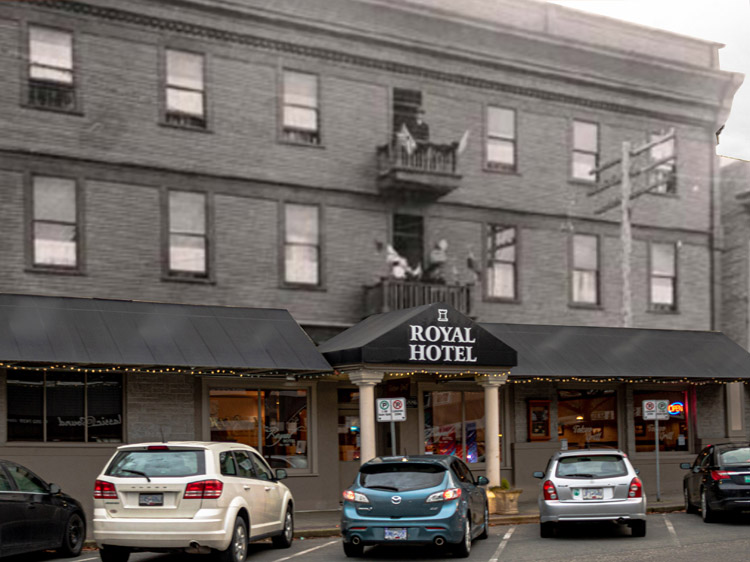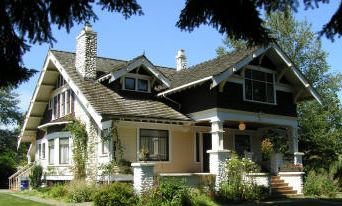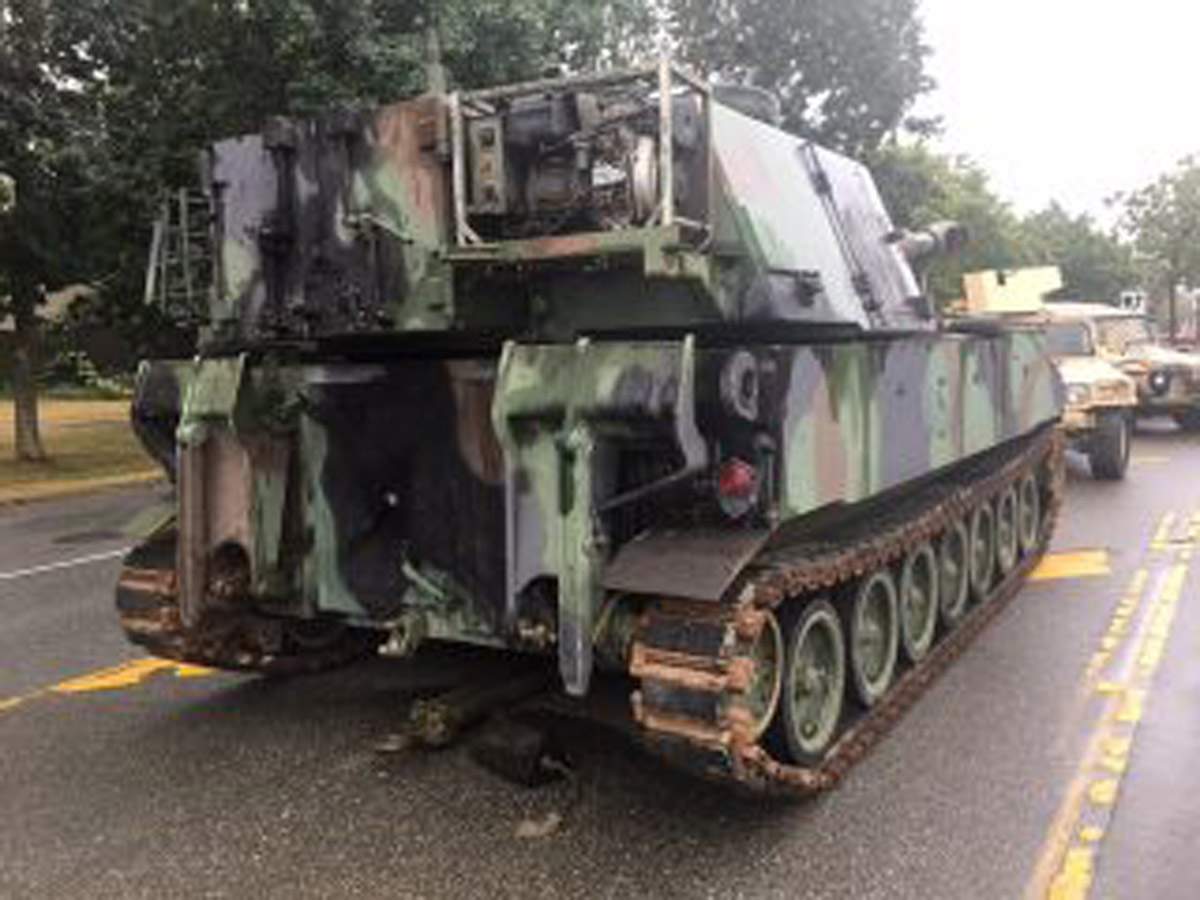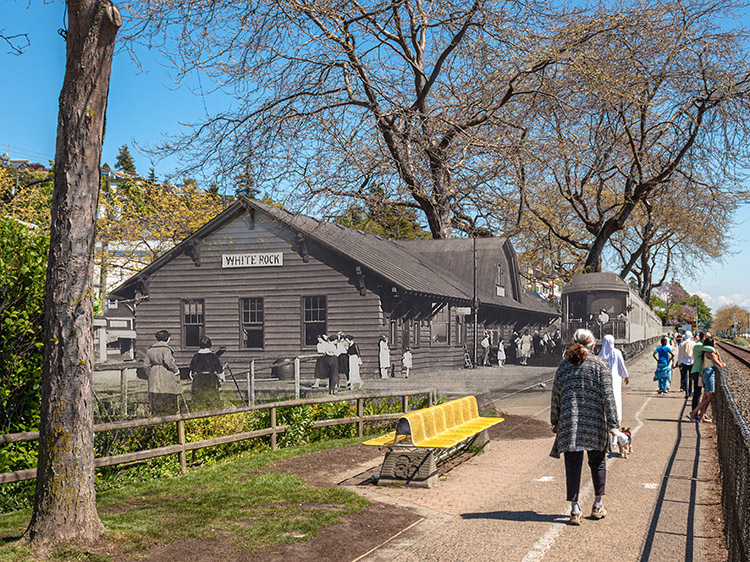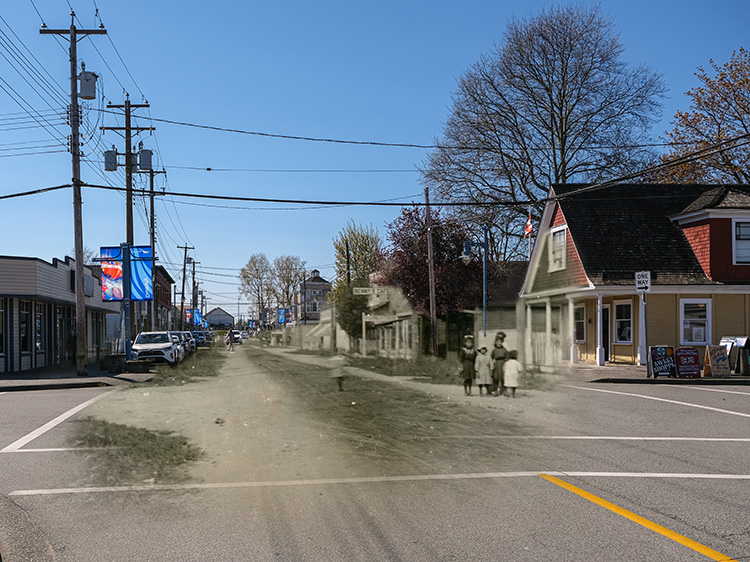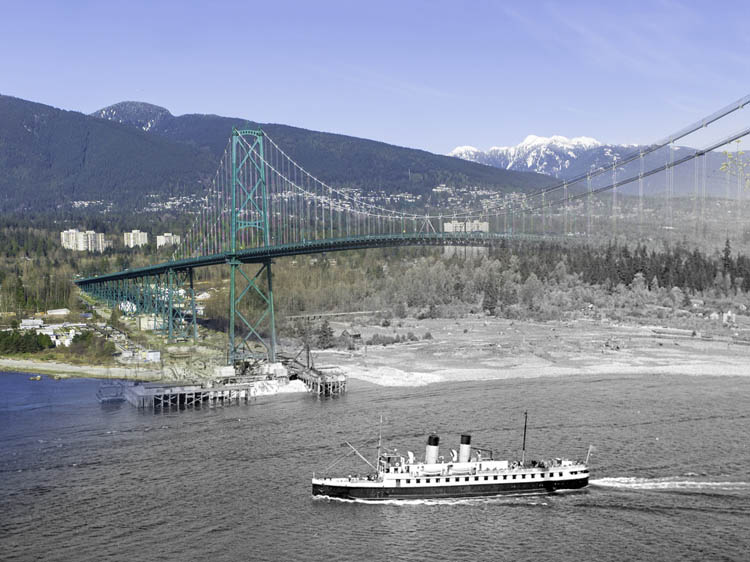Partner City
Abbotsford
Handmade and Homegrown
Abbotsford is a sprawling municipality on the banks of the Fraser River. Home to the Sto:lo First Nation for thousands of years, the historic downtown was first laid out by European settlers in 1891 alongside the Old Yale Road, a track used by gold-seekers to reach the Interior. Abbotsford has since grown into a large city, with many industries, rich farmland, and a young population. Abbotsford is made up of a number of different communities outside the historic downtown, notably Matsqui Village, a Scandinavian farming settlement that is featured in one of our walking tours.
This project is a partnership with Heritage Abbotsford and we owe them generous thanks for their support. This project was funded in party by the Heritage BC Legacy Fund.
We would like to acknowledge that the land on which all this content is built is the traditional and unceded territory of the Stó:lō.
Virtual Tours
Walking Tours
Explore
Abbotsford
Stories
Matsqui Mennonite Brethren Church
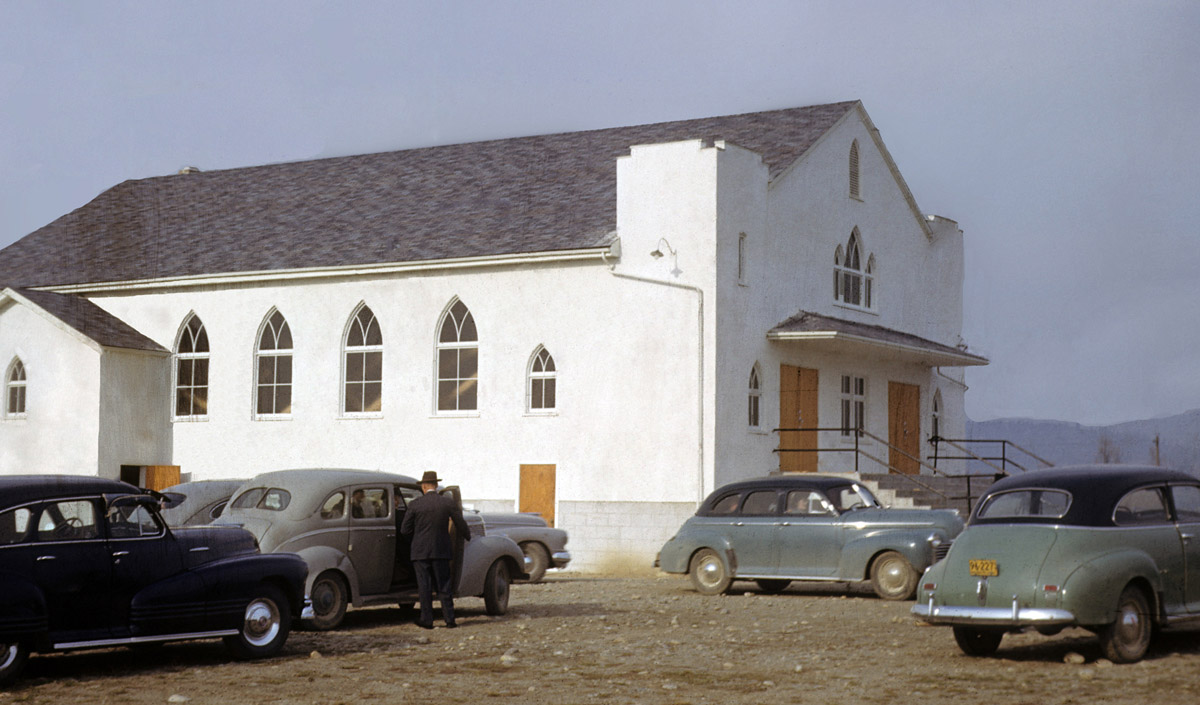
Matsqui Mennonite Brethren Church was founded in 1945. After starting in a converted farmhouse, its congregation worshiped in a sanctuary, which sadly burned down in 1959. A new church was constructed, but declining membership due to changing demographics led to its dissolution in 1975.
Mennonite Education Institute
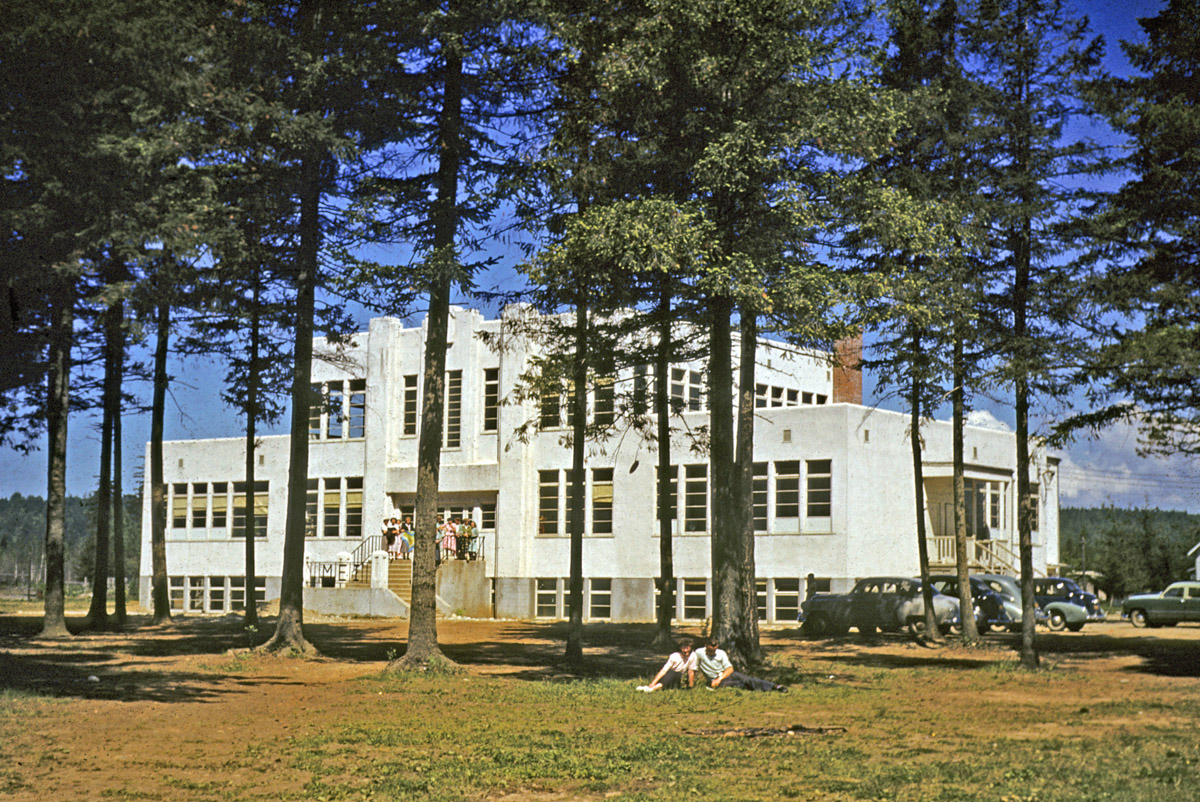
The Mennonite Educational Institute (MEI) began in 1944 to provide education aligned with Mennonite faith and values. Local leaders recognized the need for a school that preserved the Mennonite culture, language, and offered quality education. With support from Mennonite Brethren and General Conference Mennonite Churches, seven churches endorsed the school. To obtain government approval, representatives were elected to negotiate conditions, including no financial support, qualified teachers, and English as the primary language. Despite building restrictions during the war, MEI started with an addition to South Abbotsford Mennonite Brethren Bible School. The initial enrollment of 60 students decreased due to conscription, but MEI remained committed to providing education rooted in Mennonite values and cultural preservation, even in challenging circumstances.
East Aldergrove Mennonite Brethren Church
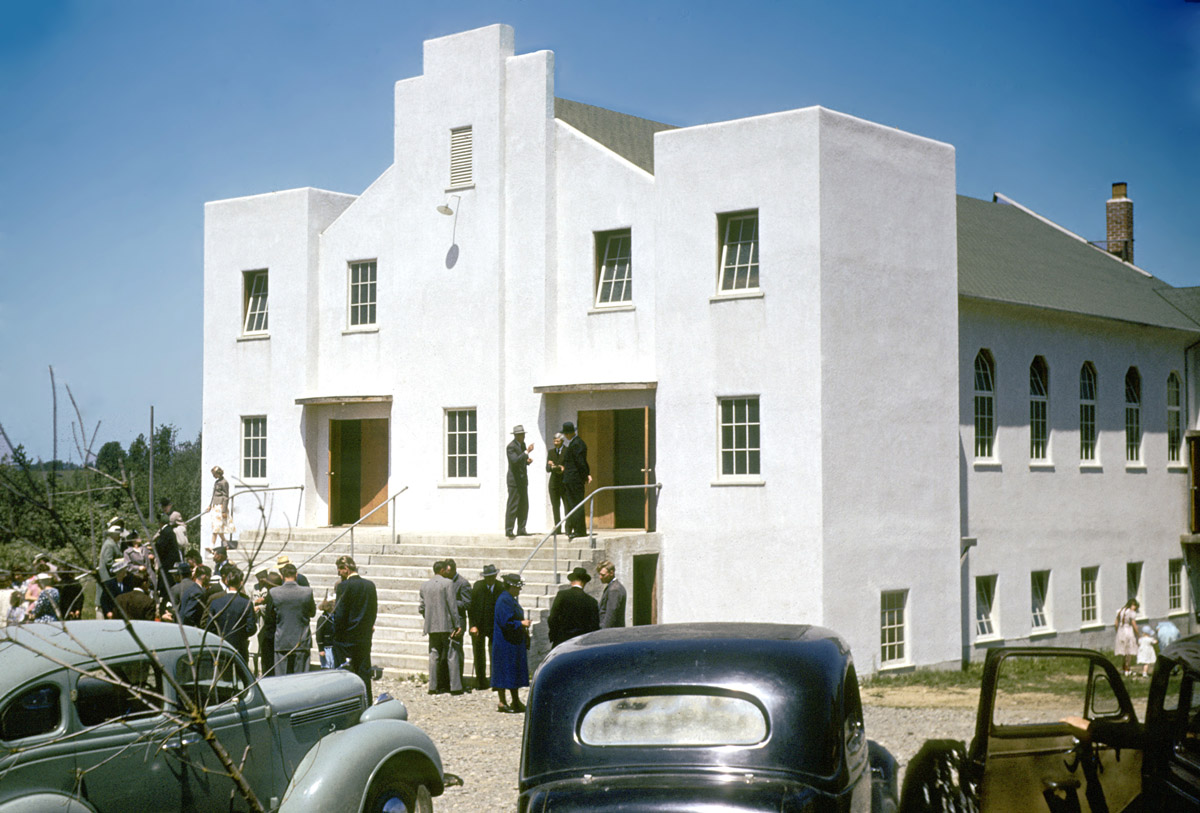
In 1947, a group of brethren from North Abbotsford Mennonite Brethren Church established their own community church in Aldergrove, British Columbia. With limited resources, they purchased land and constructed a simple sanctuary. The congregation formally organized in 1947 and joined the British Columbia Conference of Mennonite Brethren Churches. The building underwent expansions and renovations over the years to accommodate the growing community. Services transitioned from German to bilingual and then exclusively English. In the mid-1980s, the church embraced contemporary music and changed its name to Ross Road Community Church in 2000. The church has been actively involved in church planting and had a membership of 379 individuals and an average attendance of 439 in 2010.
Peardonville Mennonite Church
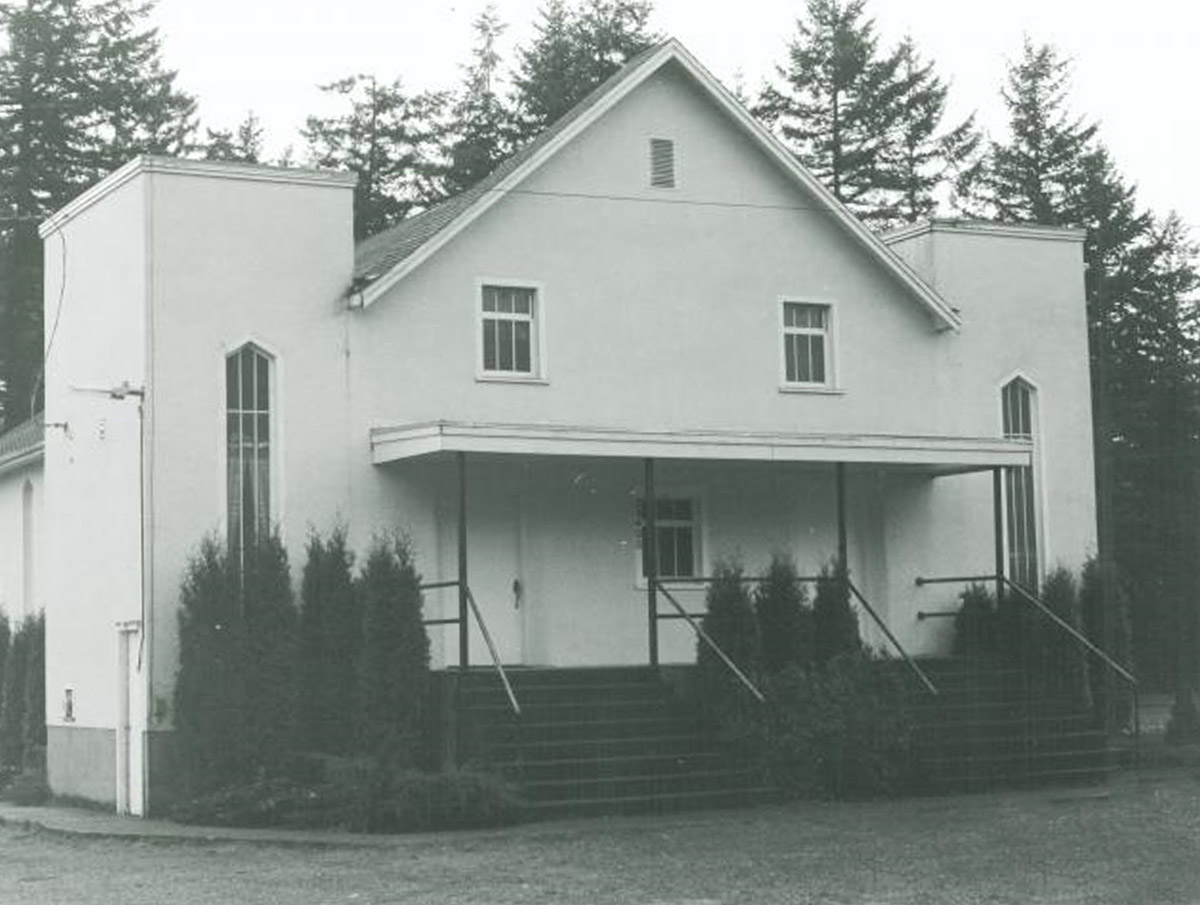
The Peardonville Mennonite Church in Abbotsford, British Columbia was established in 1951 as a Sunday School outreach. A year later it grew into a preaching station and was organized as a congregation. Over the years, the church experienced changes in leadership and membership, eventually leading to a split and decline. In 1969, the building was purchased by the Evangelical Mennonite Church, but it was later sold in 1983 after the EMC discontinued its work.
West Abbotsford Mennonite Church
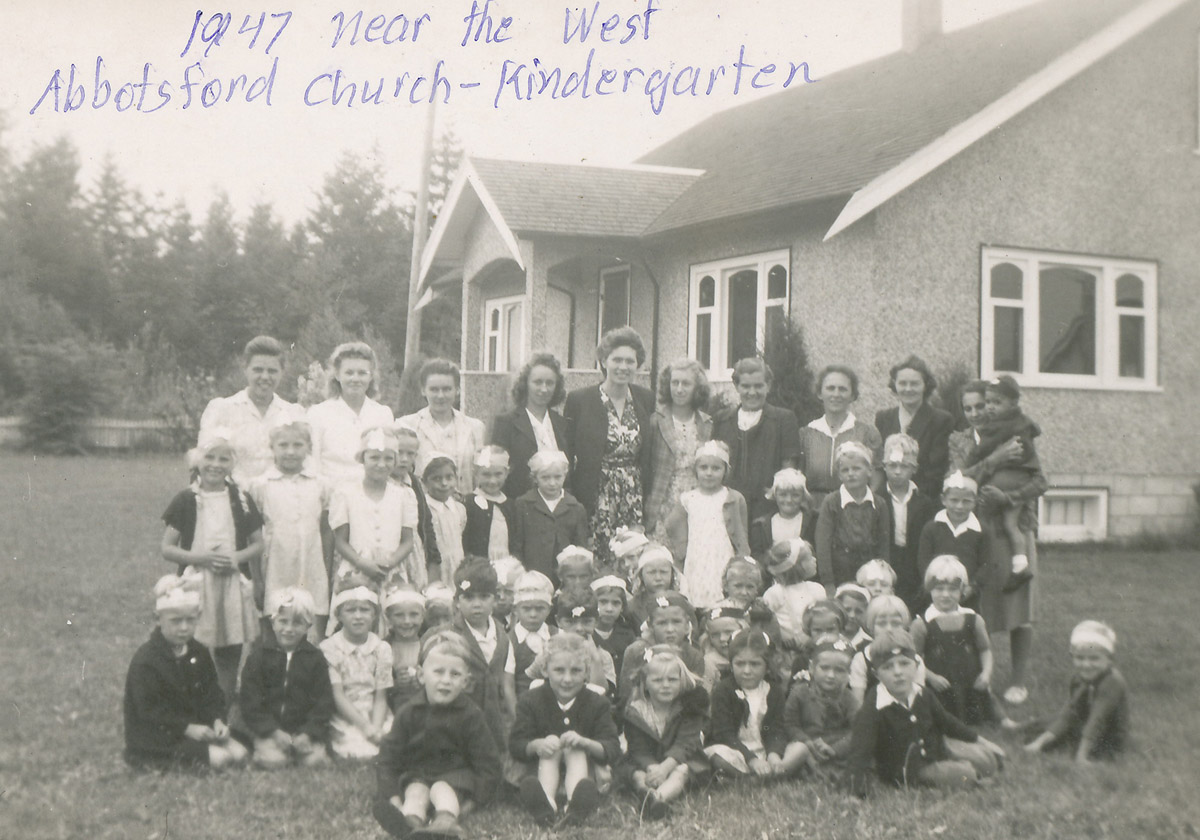
The West Abbotsford Church has a rich history that began in 1931 with Mennonite settlers in Abbotsford, British Columbia. They established the Abbotsford Mennonite Brethren Church, which later became the United Mennonite Church of Abbotsford. The church experienced growth, built a larger sanctuary, and played a role in establishing daughter congregations. It changed its name to West Abbotsford Mennonite Church in 1950 and went through transitions, including language dynamics and the establishment of Eben-Ezer Mennonite Church. It adapted to challenges, merged with Wellspring Christian Fellowship in 2008, and became Level Ground Mennonite Church. The church's impact extended beyond numbers, producing missionaries and serving Mennonite communities.
Bethel Bible Institute
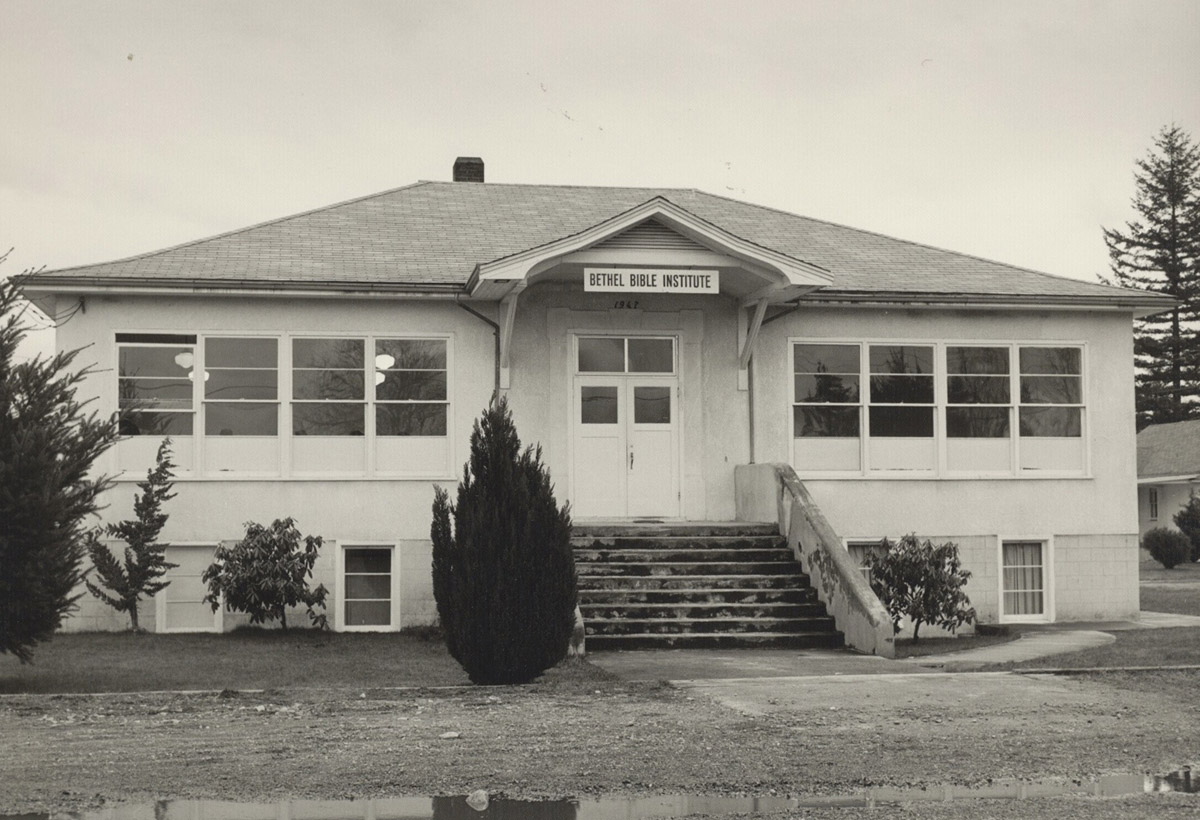
The origins of the Bethel Bible Institute can be traced back to the 1937 Ministers Conference of the Conference of United Mennonite Church of BC. Local Mennonite congregations in British Columbia had established their own Bible schools in places like Abbotsford, Coghlan, Sardis, and Yarrow. Among them, the Coghlan project, led by Nicolai W. Bahnmann, displayed considerable promise.
With Bahnmann and two other dedicated teachers, the school attracted 22 students in its first year, offering courses on the Bible, Church, and Mennonite History. Operating on a voluntary basis, the teachers imparted knowledge without charging any tuition fees. In 1943, the Conference assumed full responsibility for the school, which had been managed by a society since 1940.
The Conference, during its 1940 annual general meeting, instructed the Bible School Committee to work towards establishing a unified institution. This led to the acquisition of a four-acre plot of land adjacent to the West Abbotsford Mennonite Church, and the subsequent establishment of the Bethel Bible Institute in 1946. The institute soon developed its infrastructure, constructing a girls' dormitory and an administration building in 1947.
Hughes Park
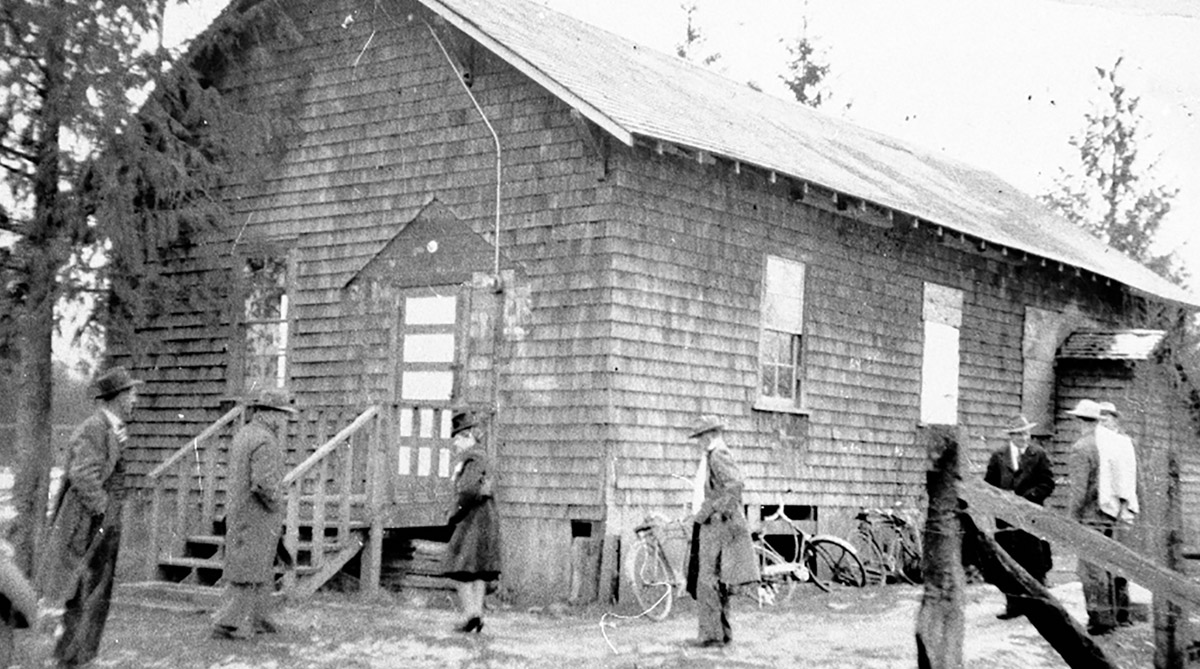
Hughes Park was once the site of the home of Liza Louisa Hughes, and in the 1920s it was where Mennonite Brethren first began gathering in the Fraser Valley. The Hughes home was demolished and replaced with a new building called Poplar Hall (and shortly thereafter upgraded and renamed the Farmers Institute Hall), and the Mennonites continued to gather there. In 1932 it was here that the congregants officially established the Abbotsford Mennonite Brethren Church. As the number of Mennonites in the Fraser Valley quickly grew, in 1935 it was decided to split the church into north and south Abbotsford branches. A year later the South Abbotsford Church moved to a new purpose-built church at the corner of Huntingdon and Gladwin Roads, while the North Abbotsford Church moved to a church on Clearbrook Road and Old Yale Road. The North Abbotsford Church was later renamed the Clearbrook Mennonite Brethren Church.
As for the Farmers Institute Hall, it was later torn down and this plot of land which had proven so crucial to the establishment of the Fraser Valley Mennonite Community, was made a park. The park was named in honour of the woman who had become beloved as Grandma Hughes.
South Abbotsford Mennonite Church(3)
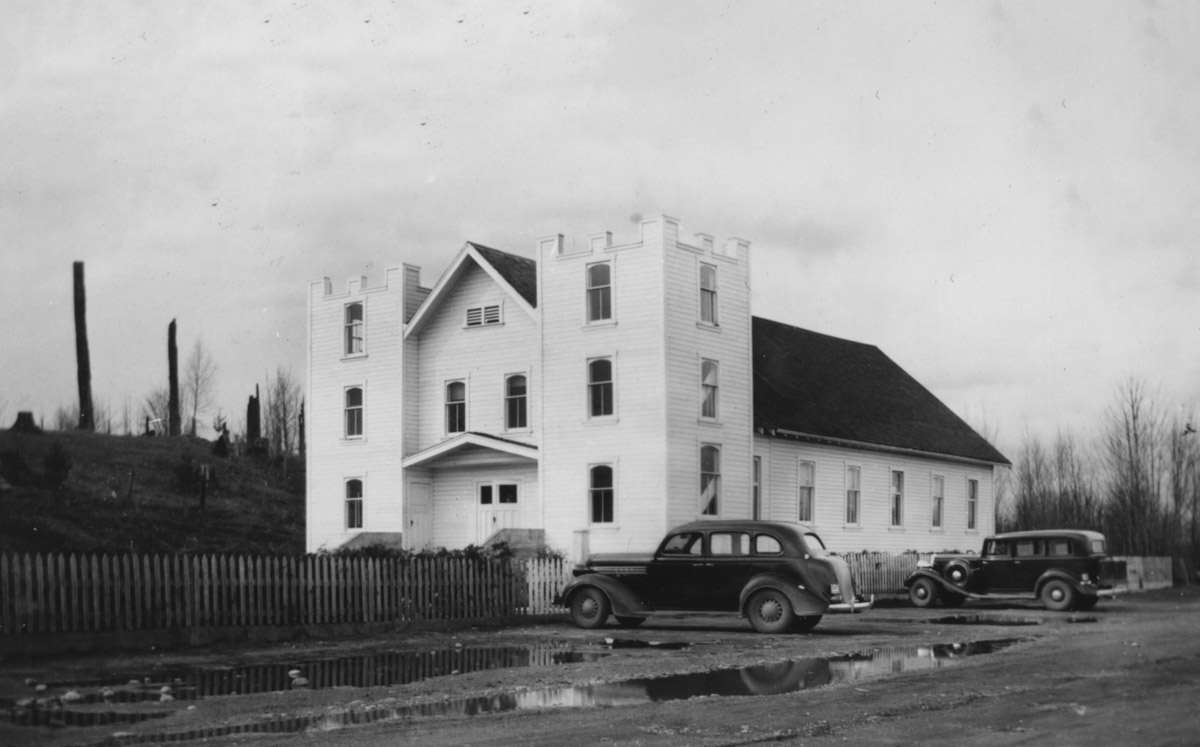
South Abbotsford Mennonite Brethren Church was the first Mennonite Brethren Church in the Fraser Valley. Established in 1932, the church has played a significant role in the community. It has a rich history of leadership, establishment of sister churches, and commitment to education. The church has also been dedicated to serving the Indo-Canadian community. With a growing congregation, it continues to be a prominent religious institution in the area.
South Abbotsford Mennonite Church(2)
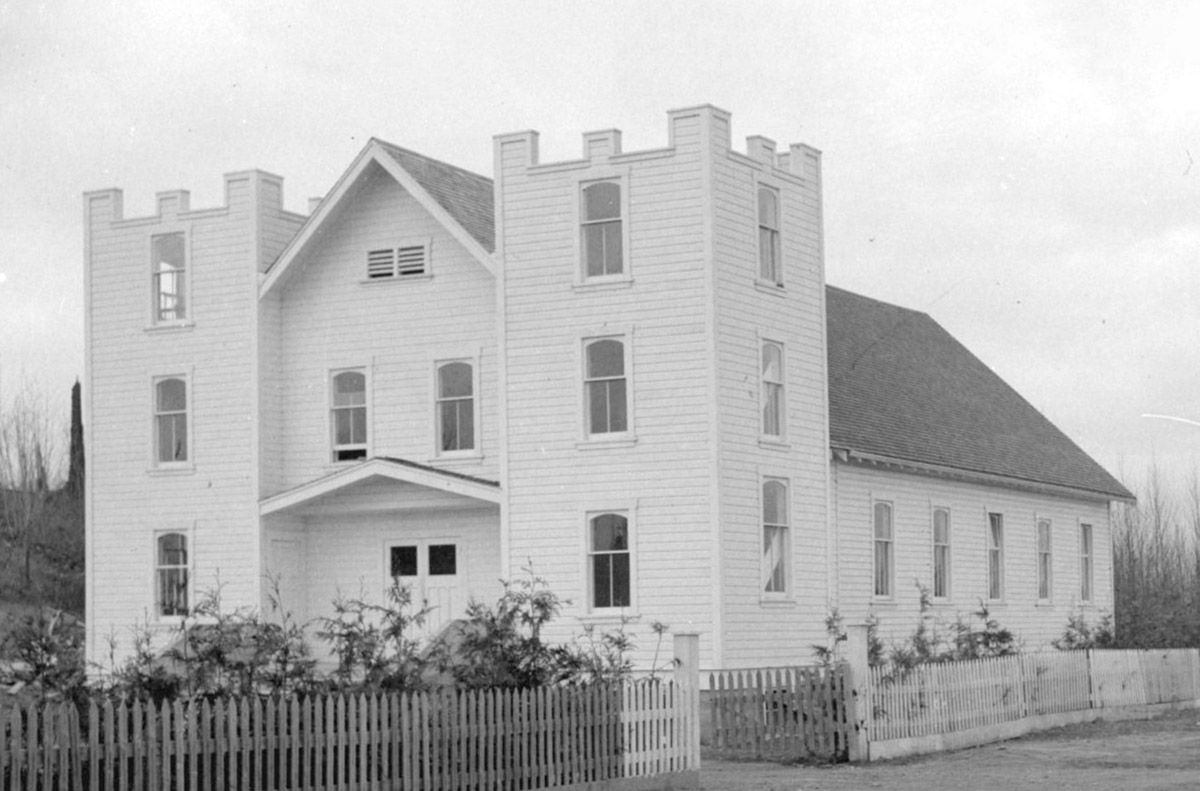
South Abbotsford Mennonite Brethren Church was the first Mennonite Brethren Church in the Fraser Valley. Established in 1932, the church has played a significant role in the community. It has a rich history of leadership, establishment of sister churches, and commitment to education. The church has also been dedicated to serving the Indo-Canadian community. With a growing congregation, it continues to be a prominent religious institution in the area.
Abbotsford Growers Co-op
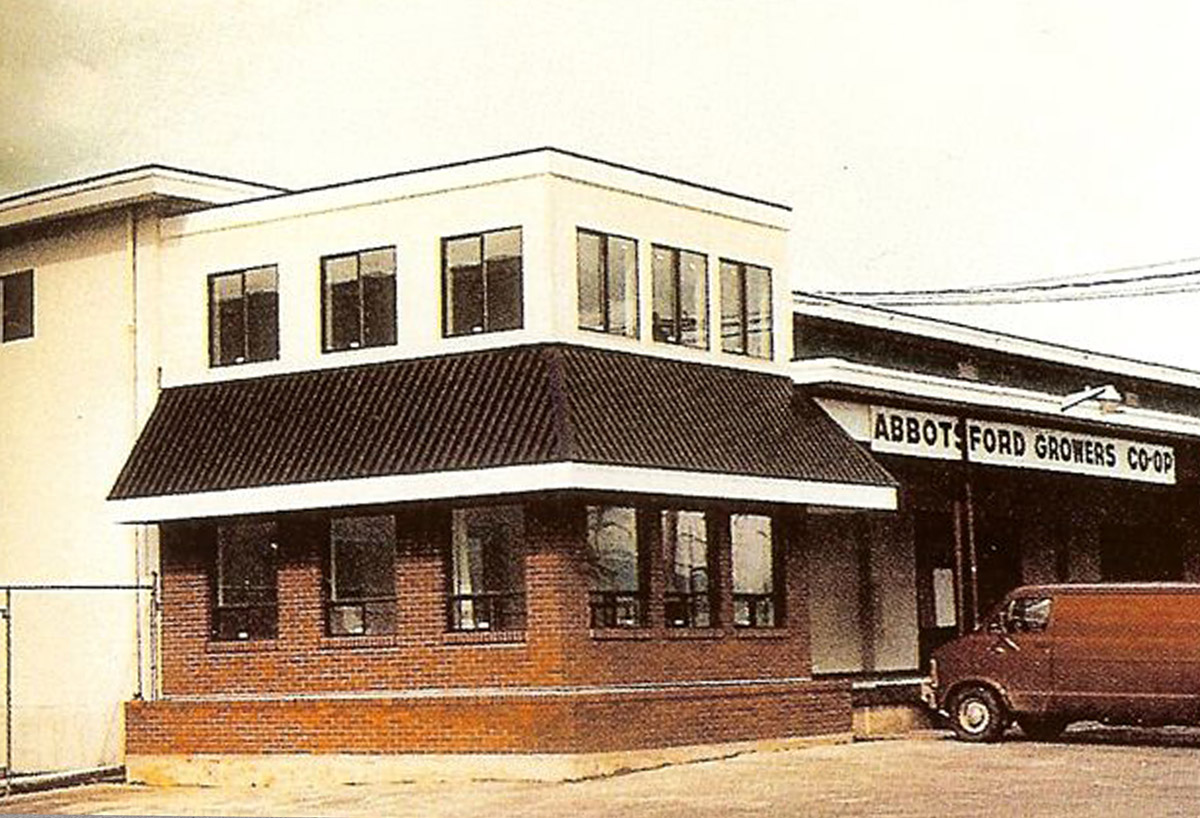
Established in 1947, Abbotsford Growers Co-operative Union is a prominent processor and packer of raspberries in British Columbia's Fraser Valley. It has been vital to the economic well-being of Mennonite farmers in Abbotsford and represents the strength of co-operative movements among Mennonite settlements. The co-operative, which started with 90 Mennonite members, has operated from three buildings and has processed millions of pounds of raspberries. The labor force has transitioned from Mennonite families to Indo-Canadian and Mexican workers, and has increasingly mechanized.
The co-operative has been integral to the economic well-being of Mennonite farmers in the Abbotsford area and exemplifies the strength of the co-operative movement among Mennonite settlements in western Canada. It also continues to proudly proclaim that Abbotsford is the "Raspberry Capital of Canada."
Central Heights Church
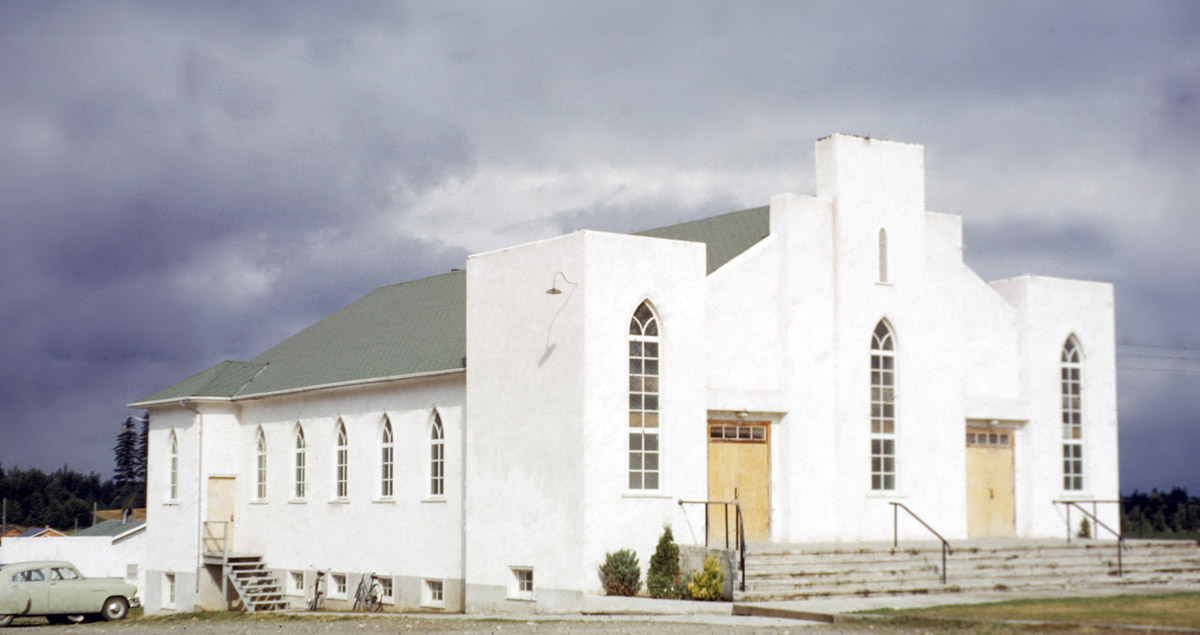
Central Heights Church originated from the South Abbotsford Mennonite Brethren Church's growing congregation, leading to the establishment of a new church in 1950. Henry H. Nikkel played a significant role in its founding. The church underwent expansions over the years, including the construction of additional sanctuaries, education buildings, and a new sanctuary in 1985. Central Heights Church actively supported the establishment of other Mennonite Brethren congregations in the Abbotsford area. Central Heights Church transitioned to conducting services exclusively in English by 1959. As of 2015, the congregation had around 805 members and an average weekly attendance of 698.
MCC Thrift Store
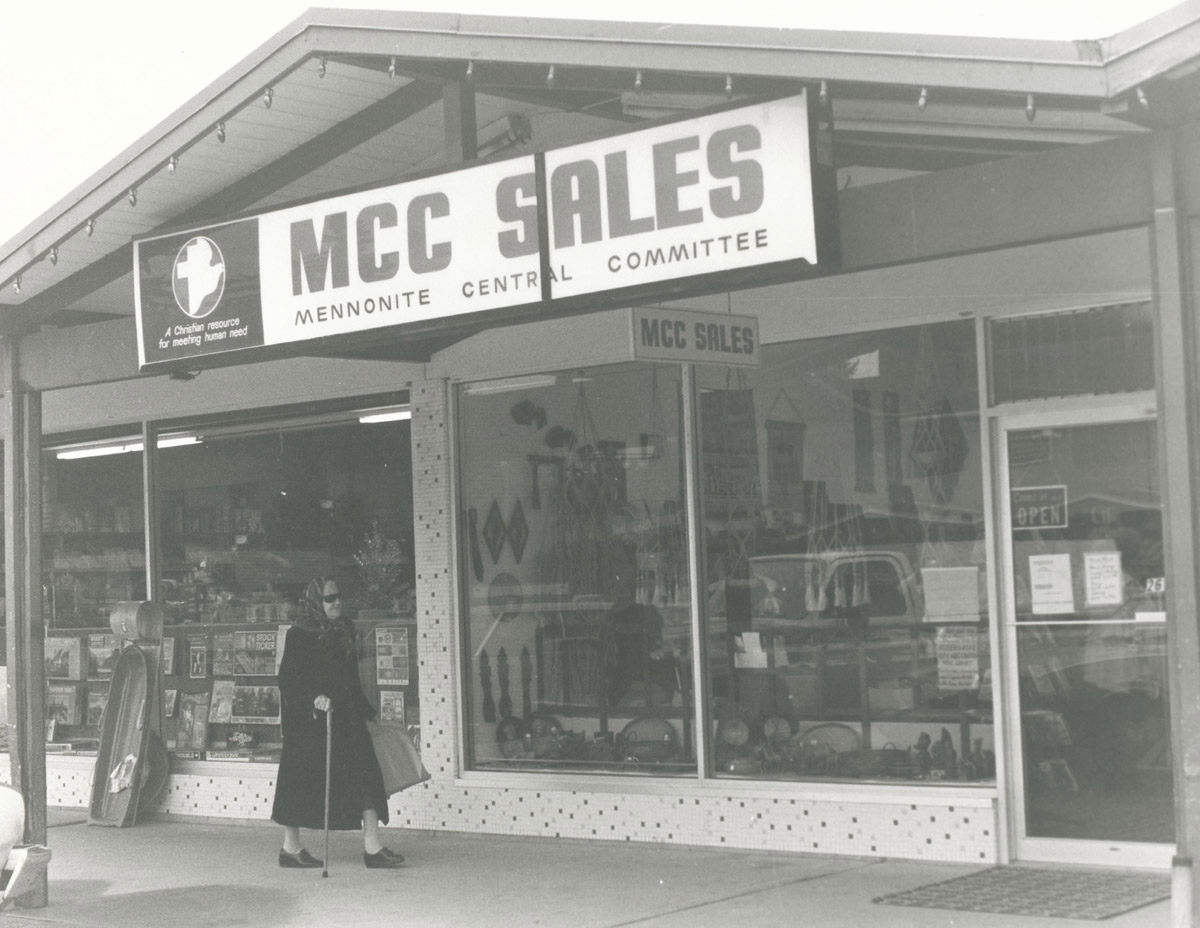
The Mennonite Central Committee (MCC) Thrift Store in Abbotsford is no ordinary thrift store, but stems from a long Mennonite tradition of aiding refugees, community service, and assisting development efforts in other parts of the world.
Columbia Bible College
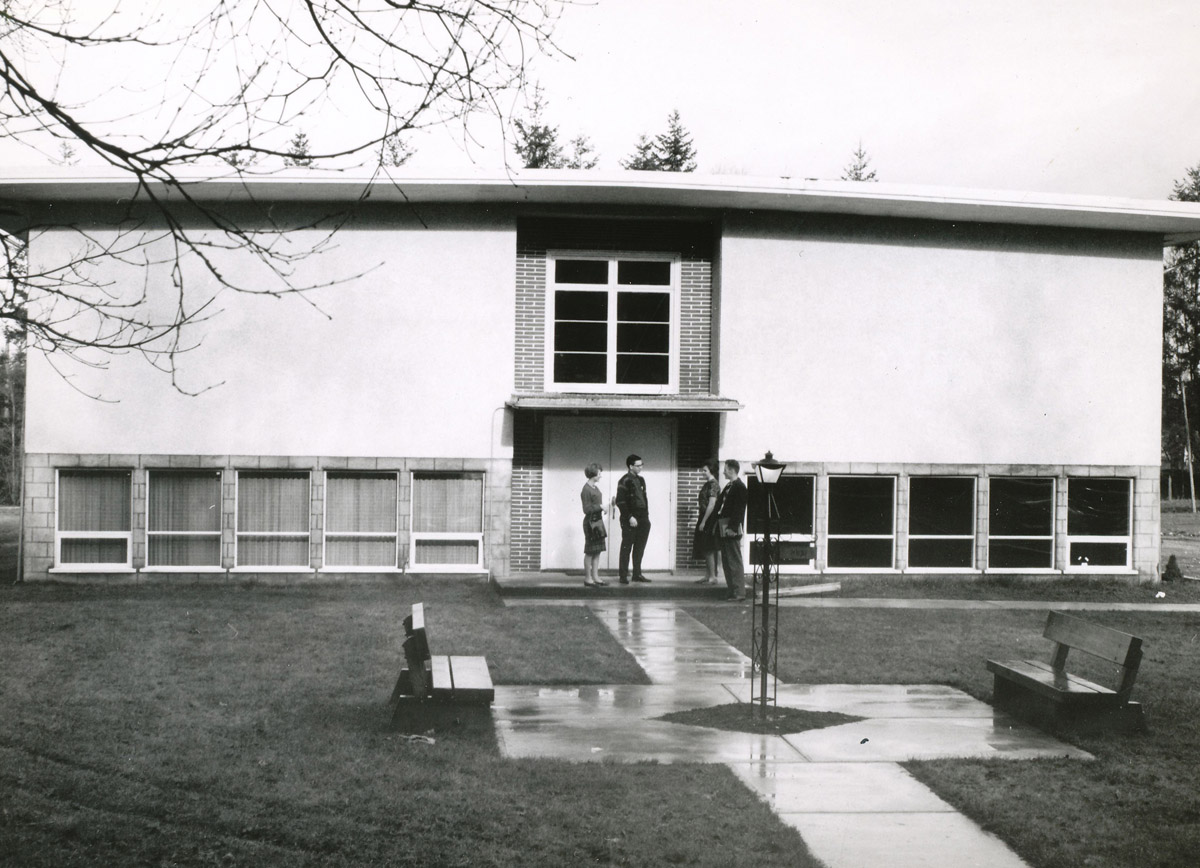
Columbia Bible College is an inter-Mennonite institution in British Columbia that upholds the Anabaptist tradition of regarding the Scriptures as the authoritative Word of God. It traces its lineage back to nine Mennonite Bible schools in the region. In the 1960s, two denominational schools, the Mennonite Brethren Bible Institute and the Bethel Bible Institute, faced challenges such as rising costs, aging facilities, and declining enrollments. After intense discussions, the Mennonite Brethren Conference of BC and the Conference of Mennonites in BC reached an agreement in 1970 to operate a single school. Initially called the Associated Mennonite Bible Institute, it became Columbia Bible Institute (CBI). Under the leadership of Peter R. Toews, CBI thrived, experiencing increased enrollment and expanding its curriculum. In 1982, the two conferences joined forces, leading to the establishment of a fully-fledged inter-Mennonite Bible institute. Eventually, CBI attained college status, and has since offered baccalaureate degrees. Today, rechristened as the Columbia Bible College, the school continues to prepare students for lives of discipleship, service, and ministry while maintaining its evangelical-Anabaptist identity.
Mennonite Brethren Bible Institute
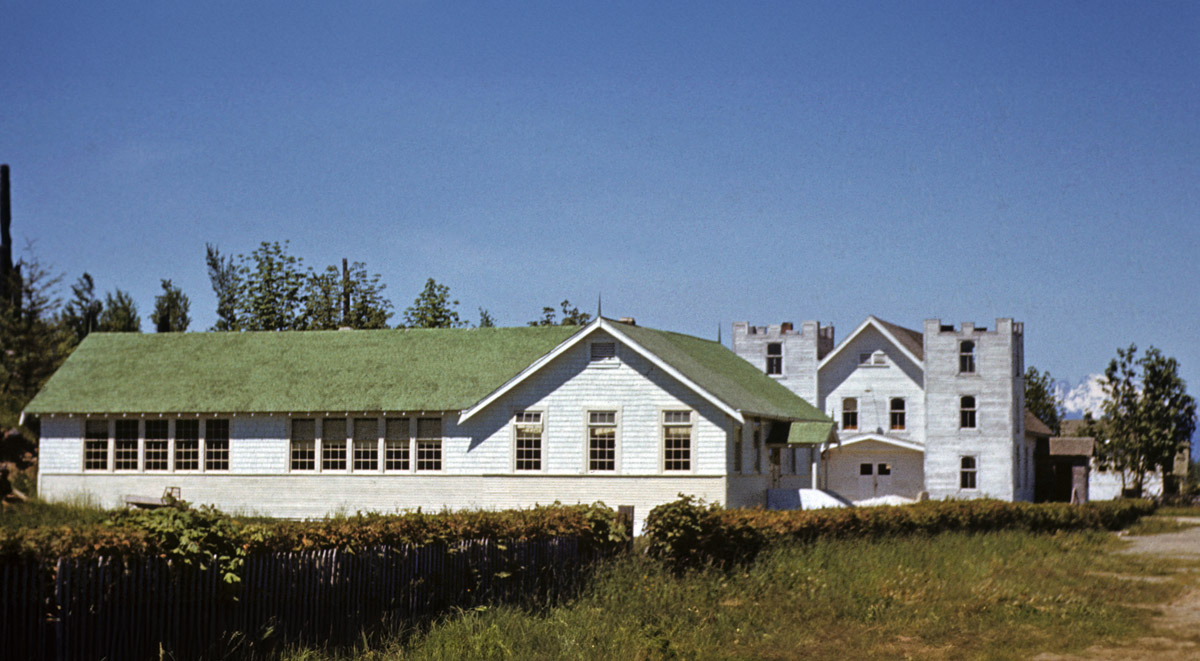
The Mennonite Brethren Bible Institute originated from a denomination that valued biblical literacy. Mennonites in British Columbia established local congregations and Bible schools to counter secularism and train church workers. The South Abbotsford Bible School, founded in 1936, faced temporary suspension during World War II but continued to grow. Renamed Mennonite Brethren Bible School, it expanded its curriculum, gained community support, and relocated to Clearbrook in 1955. Other Bible schools in British Columbia merged with it to form MBBI. The school adapted to societal changes in the 1960s, adding new facilities and programs. In 1970, it merged with Bethel Bible Institute to become Columbia Bible Institute, a collaboration between two Mennonite denominations.
Clearbrook Mennonite Brethren Church
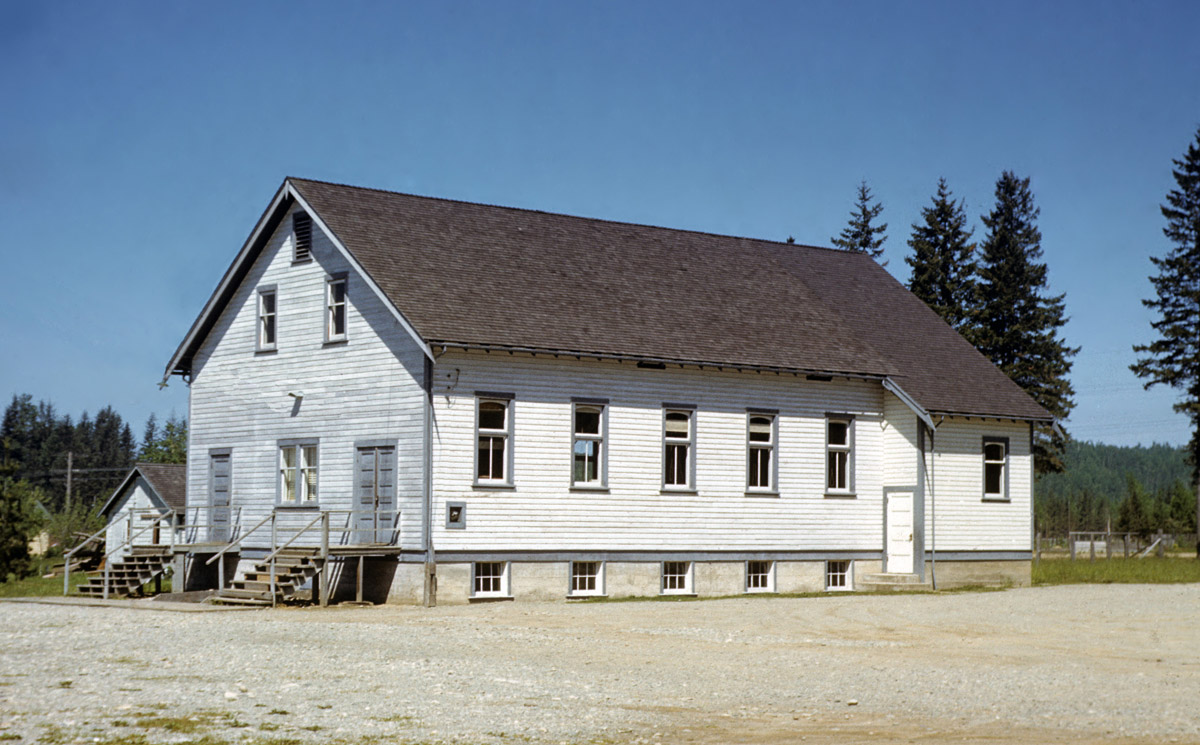
Clearbrook Mennonite Brethren Church, formerly known as North Abbotsford Mennonite Brethren Church, was established in 1935 as a daughter church of South Abbotsford. The church experienced growth and faced challenges, including supporting relief efforts after World War II. Over the decades much new construction and repeated renovations have been necessary to accommodate the growing congregation. Over its history the church has supported various ministries and community projects, such as educational institutes and senior care homes. The church has adapted to the changing community and offers services in both German and English. As of 2015, the congregation had 315 members, with an average weekly attendance of 185. The church celebrated its 75th anniversary in 2011, emphasizing a renewed vision for the future.
Funks Supermarket
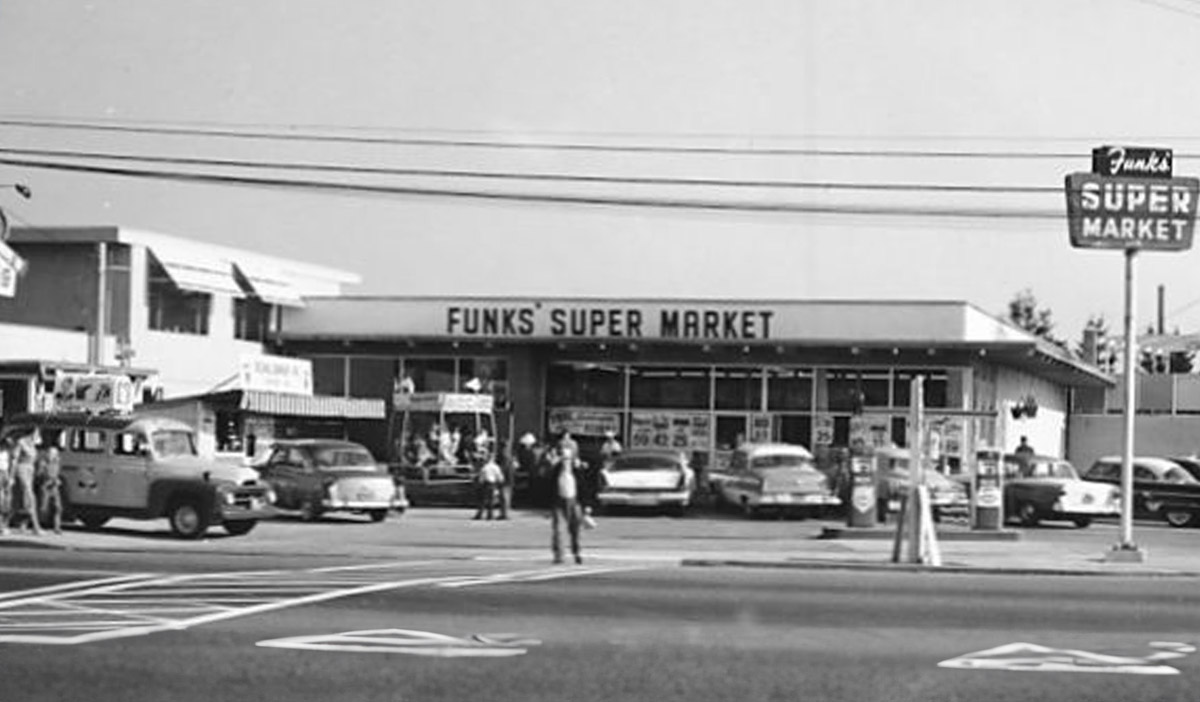
In 1955, the Funk family opened Funk's Grocery Store in Clearbrook, located at the intersection of Clearbrook Road and South Fraserway, which was then part of the old Trans Canada Highway. Three years later, a new store was constructed on the same property. In 1967, the sausage operation was moved from Yarrow to Clearbrook. The business gained a reputation for its sausages, cooked spare ribs, and other specialty items. Local hunters could bring their game to be prepared and stored in cold storage. The community of Clearbrook greatly appreciated the home delivery services and ethnic baking supplies, which became Christmas staples for many years.
As a tradition, Cornelius Funk would gather his dozen or so employees on the first working day of each new year for a Scripture reading and prayer. Although the Yarrow grocery store ceased operations in the early 1970s, the residents of Yarrow expressed their gratitude to Cornelius Funk by presenting him with a citation during Yarrow Days 1983, recognizing and appreciating his services to the community.
The store in Clearbrook was eventually sold in 2008, marking the end of a four-generation business for the Funk family.
Sumas Prairie Chapel

Prairie Chapel, originally known as Sumas Prairie Chapel, was established in 1951 in Abbotsford, British Columbia. It started as the Sumas Sunday School Mission, inspired by Henry H. Neufeld of Bethel Bible Institute, and grew under the leadership of the West Abbotsford Mennonite Church. The mission expanded its programs, changed its name to Prairie Chapel, and saw the introduction of Sunday morning services. It remained unaffiliated with any conference and emphasized spiritual education and community support in the Sumas Prairie area.
Then and Now Photos
View Across Abbotsford
1920
A photo taken from the Old Yale Road showing the railway line running through Abbotsford's townsite. On the right you can see the train station.
A Sunday Picnic
1920
A group of people enjoying a picnic on the Matsqui Prairie. This photo location is an approximation of the original spot, since there were no identifying landmarks.




